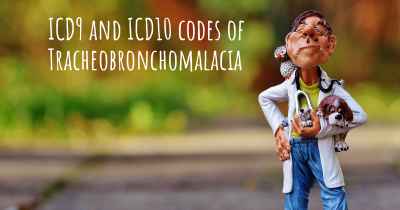Living with Tracheobronchomalacia. How to live with Tracheobronchomalacia?
Can you be happy living with Tracheobronchomalacia? What do you have to do to be happy with Tracheobronchomalacia? Living with Tracheobronchomalacia can be difficult, but you have to fight to try to be happy. Have a look at things that other people have done to be happy with Tracheobronchomalacia

Living with Tracheobronchomalacia
Tracheobronchomalacia (TBM) is a condition characterized by the weakening or collapse of the airway walls, specifically the trachea and bronchi. This can lead to various respiratory symptoms and challenges. While living with TBM can be challenging, there are several strategies and lifestyle adjustments that can help improve your quality of life.
1. Seek Medical Guidance
If you have been diagnosed with TBM, it is crucial to work closely with your healthcare team, including pulmonologists, respiratory therapists, and other specialists. They can provide you with the necessary guidance, treatment options, and support to manage your condition effectively.
2. Medications
Your doctor may prescribe medications to help alleviate symptoms associated with TBM. These may include bronchodilators to open up the airways, corticosteroids to reduce inflammation, or mucus thinning medications to facilitate easier breathing. It is important to take these medications as prescribed and discuss any concerns or side effects with your healthcare provider.
3. Breathing Techniques
Learning and practicing specific breathing techniques can significantly improve your respiratory function and reduce symptoms. Techniques such as diaphragmatic breathing, pursed-lip breathing, and controlled coughing can help strengthen your respiratory muscles and enhance airway clearance. Your healthcare provider or a respiratory therapist can guide you in learning these techniques.
4. Pulmonary Rehabilitation
Pulmonary rehabilitation programs are designed to improve lung function, increase exercise tolerance, and enhance overall respiratory health. These programs typically include exercise training, education on managing respiratory conditions, and nutritional counseling. Participating in a pulmonary rehabilitation program can provide you with valuable tools and support to better manage TBM.
5. Maintain a Healthy Lifestyle
Adopting a healthy lifestyle can have a positive impact on your overall well-being and respiratory health. It is important to maintain a balanced diet, engage in regular physical activity (as recommended by your healthcare provider), and avoid smoking or exposure to secondhand smoke. Additionally, practicing good hygiene, such as frequent handwashing, can help reduce the risk of respiratory infections.
6. Manage Symptoms
While it may not be possible to completely eliminate symptoms associated with TBM, there are strategies to manage them effectively. For example, using a humidifier or steam inhalation can help alleviate coughing and improve airway moisture. Sleeping with an elevated head position can also help reduce breathing difficulties during sleep. Discussing your symptoms with your healthcare provider can help identify personalized strategies to manage them.
7. Emotional Support
Living with a chronic respiratory condition like TBM can be emotionally challenging. It is important to seek emotional support from friends, family, or support groups who understand your condition. Sharing your experiences, concerns, and feelings with others can provide a sense of belonging and help you cope better with the challenges you may face.
8. Regular Follow-ups
Regular follow-up appointments with your healthcare provider are essential to monitor your condition, adjust treatment plans if necessary, and address any concerns or questions you may have. Keeping track of your symptoms, medication usage, and any triggers can help provide valuable information during these appointments.
Remember, living with Tracheobronchomalacia requires proactive management and a multidisciplinary approach. By working closely with your healthcare team, adopting healthy lifestyle habits, and seeking support, you can lead a fulfilling life while effectively managing your condition.
Posted Jul 30, 2017 by KimG 1200








